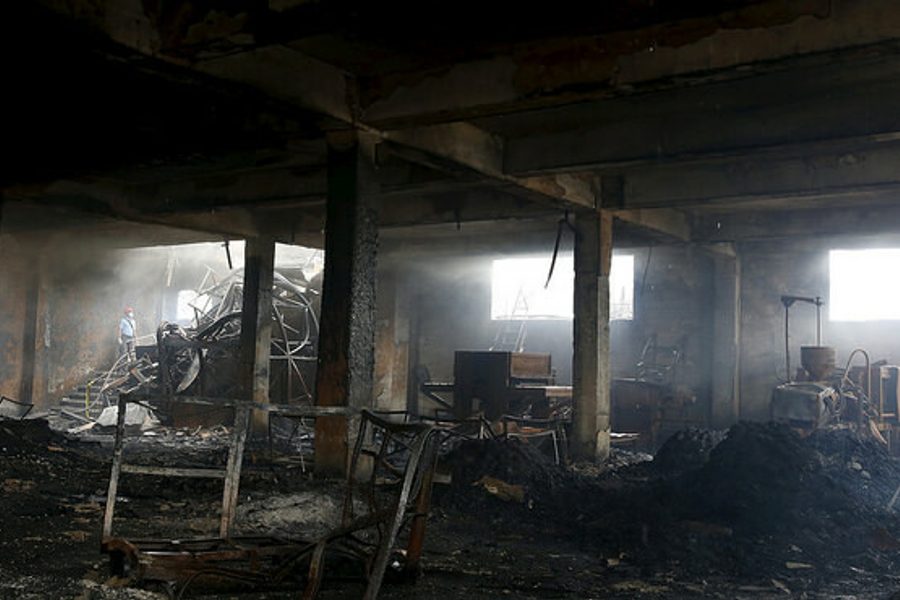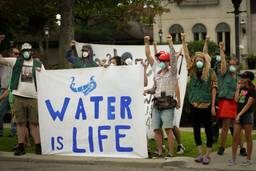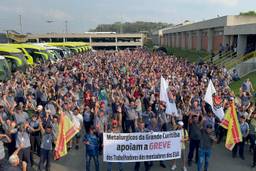
On Wednesday, 72 employees were killed and many were left injured in a large industrial fire in the Philippines. The Kentex Manufacturing Corporation, a footwear manufacturing plant in Valenzuela, started on fire when welders were working on the metal front gate of the building. The fire was sparked when chemicals used in the production of rubber slippers were ignited near the gate and grew quickly due to the abundance of flammable material inside of the building.
“The situation happened very fast,” said the city spokesman, Rhay R. Sousa, according to New York Times reporter Floyd Whaley. “Some people had to jump from the building to escape.”
Many of the workers were trapped on the second floor, and the intensity of the heat made it difficult and dangerous for firefighters to rescue workers. Due to the ferocity of the blaze, the recovered remains were unrecognizable. Family members are working with officials to determine distinguishing features that will help to identify the bodies.
On May 14, the country’s Department of Labor and Employment (DOLE) issued a statement assuring family members that they would be launching an investigation in order to ensure accountability and press charges for the incident. DOLE will also be providing families with compensation for funeral expenses and medical care.
In the same statement, DOLE says that the Kentex Manufacturing Corporation was unionized and compliant with the general labor standards and occupational health and safety standards of Filipino labor law. How such a deadly fire could occur in a factory fully compliant with health and safety law has not yet been explained.
In a press release posted on the DOLE website on May 15, however, Secretary Rosalind Dimapilis-Baldoz admitted that Kentex had been guilty of misconduct within the DOLE labor codes: “The company has engaged, and is engaging, the services of an illegal subcontractor, a violation of the Labor Code, and therefore, it is responsible for the subcontractor’s workers.”
At the time of the fire, 104 of the workers in the plant were subcontracted by Kentex through CJC Manpower Services. Because CJC Manpower Services was not a registered subcontractor through DOLE, it was illegal for Kentex to use their employees, even if they were Filipino and trained to work in the footwear factory. Kentex gave the DOLE a list of these workers in order to compare the names to the list of missing persons and found that 36 of the missing persons were subcontracted through CJC.
DOLE Director Alex Avila explained that Kentex had not been utilizing subcontracted employees on their March 3, 2014 labor code inspection. Kentex began using CJC after they passed the labor code inspection and were issued a Certificate of Compliance.
While the management of Kentex and CJC Manpower Services are summoned to a conference with DOLE on Monday, enraged members of BAYAN, a nationalist and democratic Filipino alliance, took to the streets of the capital city of Manila on Thursday to protest the negligence of safety standards.
“The 72 confirmed dead point to very serious occupational safety issues in the factory,” claims Renato Reyes Jr., secretary general of BAYAN. “Were there sufficient fire exits? Were there enough fire extinguishers inside the factory? Were fire drills previously conducted by the factory? Were inspections previously conducted by the relevant government agencies? Was there criminal negligence on the part of the factory owners and the government inspectors?”
The neglect of worker safety within garment factories is clearly widespread in the Global South. In 2013, the Rana Plaza garment factory collapse in Bangladesh killed 1,129 workers. Authorities ignored employees when they reported that there was a crack in the foundation of the factory and were told that they were “to report to work anyway or risk losing a month’s wages.”

I hope you found this article important. Before you leave, I want to ask you to consider supporting our work with a donation. In These Times needs readers like you to help sustain our mission. We don’t depend on—or want—corporate advertising or deep-pocketed billionaires to fund our journalism. We’re supported by you, the reader, so we can focus on covering the issues that matter most to the progressive movement without fear or compromise.
Our work isn’t hidden behind a paywall because of people like you who support our journalism. We want to keep it that way. If you value the work we do and the movements we cover, please consider donating to In These Times.






